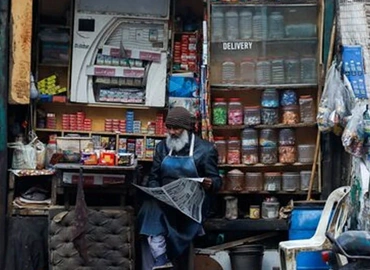Preface
Writing in 1971, Dr. Anwar Iqbal Qureshi - one of Pakistan’s prolific econ omists, had this to say about urban housing situation in the country: “The housing backlog in urban areas has increased progressively; from a shortage of 600,000 dwelling units in 1960 to a shortage of approximately 1-1.5 million units by 1970.” It meant that each year, there was a shortfall of around 50,000 housing units. In 2014, writes our scholar Shahid Mehmood in this paper, the gap between demand and supply has resulted in a backlog of around 9 million housing units. Of this the urban shortfall is 3 to 3.5 million units, almost all of which is in the segment of low-income households. The annual backlog is an estimated 300,000 houses.
The supply and demand situation in housing market is highly skewed, indi cating there is huge “cash on the table”. According to estimates by a private low income housing expert, Jawad Aslam, 68% of Pakistan’s population has only 1% of total housing stocks whereas 56% of housing stock is meant for 12% of upper income segments. There appears to a huge untapped market and unmet demand for housing units in the urban areas particularly for the low and lower-middle income segment.
From 1970s to 2013, every government has invested in supply of low cost housing units for the low income segment. The government established a specialist housing finance company, House Building Finance Corporation (HBFC) to facilitate housing mortgage. The State Bank of Pakistan (SBP) keeps reminding the commercial banks to extend housing mortgage. All these steps have failed to alter the fundamentally skewed nature of housing supply and demand. The private sector seems convinced of building more houses for those whose marginal utility is already on a decline, and has not done anything for those who are ready to sacrifice their current consump tion to own a house. The mortgage to GDP ratio remains less than 1%.
As far as provisions for low income segments are concerned, the Housing Policy 2001 looks good on paper. However, it is not for the first time that such policy measures have been announced. An analysis by Muhammad Ali Tirmizi suggests that all these policies have failed to serve their purpose precisely because the “procedures adopted for their implementation are in compatible with the sociology and economics of lower income groups.”
The current government has also announced its plans to provide and finance 500,000 houses for the low income segment. In 2014-15 budget, the govern ment provided Rs. 6 billion to be spent on low income houses through a newly formed company, Apna Ghar Limited. As yet there is no evidence of any tangible progress by this company. There are corresponding schemes run by provincial governments (since housing is a provincial subject after the 18th Constitutional Amendment), where Punjab’s Ashyana scheme seems doing well.
In addition, the federal government also earmarked Rs. 20 billion/- in budget FY15 as guarantee for housing loans to be issued for low income segments. The guarantee scheme is quite ambitious when we consider a very low off take of such loans due to hesitation of banks on account of defaults. Indeed, the outstanding housing credit constitutes hardly 1% of total outstanding loans of commercial banks in the country. However, it is hoped that the cur rent budgetary initiative of a low cost guarantee scheme will, at least partial ly, compensate for low off-take of financing facilities as it will provide banks with a hedge against defaults.
The current policy environment is marked by horizontal expansion of cities, rigid zoning laws in urban areas, restrictions on building heights and high mortgage costs. As a result real estate costs have escalated manifolds to the point of becoming comparable to real estate prices in major capitals of the world. On the flipside, however, the infrastructure has become one of the worst in the region. The situation presents major policy challenges for urban development in general, and for low income housing segment in particular, ,for which wide-ranging reforms are needed. The market will respond pos itively to these reforms. However, the onus lies on the government. More than just provisioning of houses, a task in which a government is more like ly to fail, it will do very well by just getting the policy right and letting the market manage the problem.
Here is a quick fix: ban on developing empty plots either by the govern ment or by the private sector. Heavily penalize ownership of more than one house. Relax building height limits. These three steps will at once eliminate speculation and deflate property prices - thus developing housing market for the two-third of Pakistan’s population.
In this paper, Shahid Mehmood has offered both short-term and long-term solutions to expand home ownership to those who have been deprived of it over time. He has ably brought together evidence from around the world to educate the readers about how the world has solved this problem by intelli gent policy making. I hope this paper by PRIME will positively contribute in the discussions around low income housing segment in Pakistan.





